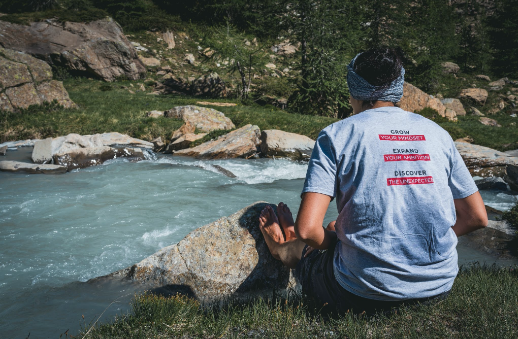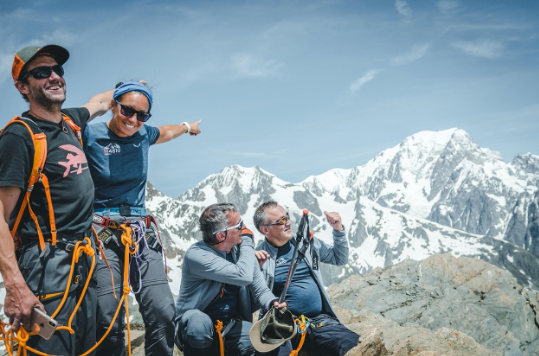
M4810 non è mai stato un esame, una verifica che è porta a superare i propri limiti o a restare indietro. È nato e si è sviluppato come un allenamento di mindset, un percorso che serve a superare altri esami e che non è fine a sé stesso.
Si potrebbe dire: “un piccolo passo” per Methodos, “un grande balzo” per il Change Management, per l’applicazione di metodi e regole al di fuori dei confini aziendali. Un laboratorio, forse ancor più che una palestra, dove stabilire con metodo scientifico i principi e le formule validi tanto sugli esseri umani quanto sulle organizzazioni.
Proseguendo lungo il percorso è diventato chiaro che la strada, seppur unica, sarebbe stata affrontata in modo diverso dalle singole persone. Esattamente come in qualsiasi progetto di Change, non si può obbligare qualcuno a cambiare, non si può calare dall’alto una nuova abitudine o un modo di pensare, né si può pretendere che tutti partano dallo stesso livello e raggiungano il medesimo risultato. Ciascuno è padrone della propria asticella, di posizionarla all’altezza che ritiene giusta in base a fattori interni ed esterni: finché starà più in alto di quanto sarebbe stata prima del progetto, allora il cambiamento sarà un successo individuale e di team.
M4810 ha avuto un percorso simile. Siamo partiti tutti insieme, uniti pur nelle differenze, con un chiaro obiettivo in mente, personale e aziendale. Non il Monte Bianco, che ancora era un puntino all’orizzonte, troppo vago e indefinito per essere visualizzato nella sua interezza. L’obiettivo era mettersi alla prova con una sfida più grande di noi, di ciascuno dei componenti. Erano più i dubbi delle certezze, ma in quel momento, era giusto così. E da allora, un passo alla volta, abbiamo iniziato a salire.
Un po’ ingenui, un po’ coraggiosi, ecco le prime sfide, le prime domande. Come chiedersi se sia il caso di raggiungere la vetta e il rifugio Nicola, oppure di non lasciare indietro un compagno. O quale sia il limite tra la sfida autonoma e il lavoro di squadra, in Val Masino.

Poi arrivano le sfide esterne, con la montagna, con l’altezza. La prima ferrata, lassù, sospesi a quasi 3.000 metri in cima al Monte Fallère; il freddo e la scarsa visibilità al confine con la Svizzera, al Passo del Sempione. Il ghiaccio a Punta Helbronner, l’altitudine nella Vallèe Blanche, il dislivello in Grigna e a Punta Lechaud. A ogni sfida del gruppo corrisponde una sfida personale: ciascuno si ritrova a confrontarsi con le proprie paure, con i propri limiti.
E dopo ogni uscita, l’analisi imparziale (e inclemente), la riflessione attiva. Perché quando ci si muove su terreni inesplorati non c’è traccia da seguire, e solo un processo di errore-correzione può indicare la via. Questo ha funzionato, questo no. Tenere, buttare, modificare, migliorare. Così affina le armi chi ha fatto del cambiamento costante la propria professione. Ogni passo è una presa di consapevolezza individuale e di team, l’applicazione del concetto di “Changeability” aziendale e individuale: una goccia piccola ma costante, che spinge a cambiare abitudini, abbandonando quelle negative lungo la salita e acquisendone di nuove.
Man mano che si procede, ciascuno si trova a combattere la propria battaglia personale. Per Lilli la sfida è con il proprio corpo, con difficoltà oggettive da cui però non si lascia fermare, alzando la sua asticella per quanto difficile. Per Angelo è una scoperta progressiva di qualcosa che non aveva mai sperimentato prima. Diletta rivaluta il potere delle decisioni, che la portano più in là di quanto avrebbero fatto le sole gambe. Valentina affronta la montagna come un’estensione della meditazione, Max come una sfida di team, Alessio come lo strumento attraverso cui riflettere su se stesso come manager, Sabrina come un’emozione esplosiva che inietta direttamente nel lavoro. Anche per chi ha già visto tante vette, come Martina e Matteo, la sfida è grande e pone tanti interrogativi.

A pochi mesi dall’epilogo di questo percorso, ci attendono le cime più alte e le sfide più grandi; non vi è niente di certo se non che il cambiamento c’è stato, c’è e continuerà ad esserci.
Ma è il tempo delle scelte e, come spesso capita, bisogna prendere decisioni importanti in un contesto di incertezza, senza la possibilità di conoscere esattamente tutti gli sviluppi.
Sappiamo che il Monte Bianco sarà 4.810 metri di sfida. Sappiamo che non basterà l’allenamento di gruppo, servirà una grossa componente individuale per raggiungere i vari 4.000 che ci attendono. Sappiamo di non poter controllare tutte le variabili, che il rischio zero in montagna non esiste, ma che faremo tutto ciò che possiamo per minimizzarlo.
Sappiamo che siamo al giro di boa: è il momento di prenotare il rifugio e le guide che ci accompagneranno, di organizzare l’ultimo, più difficile miglio. È ora di guardarsi dentro e chiedersi: dov’è la mia asticella? Una domanda a cui ciascuno deve rispondere in autonomia.





